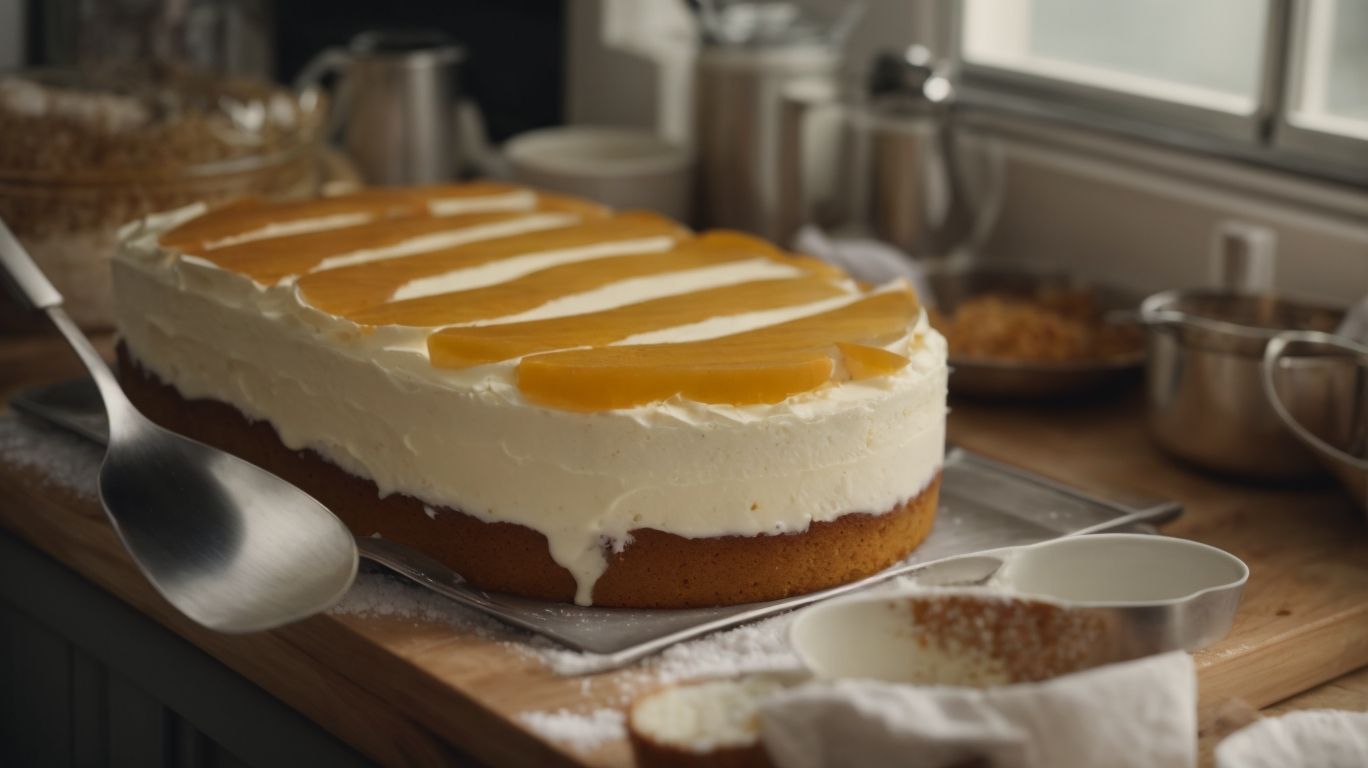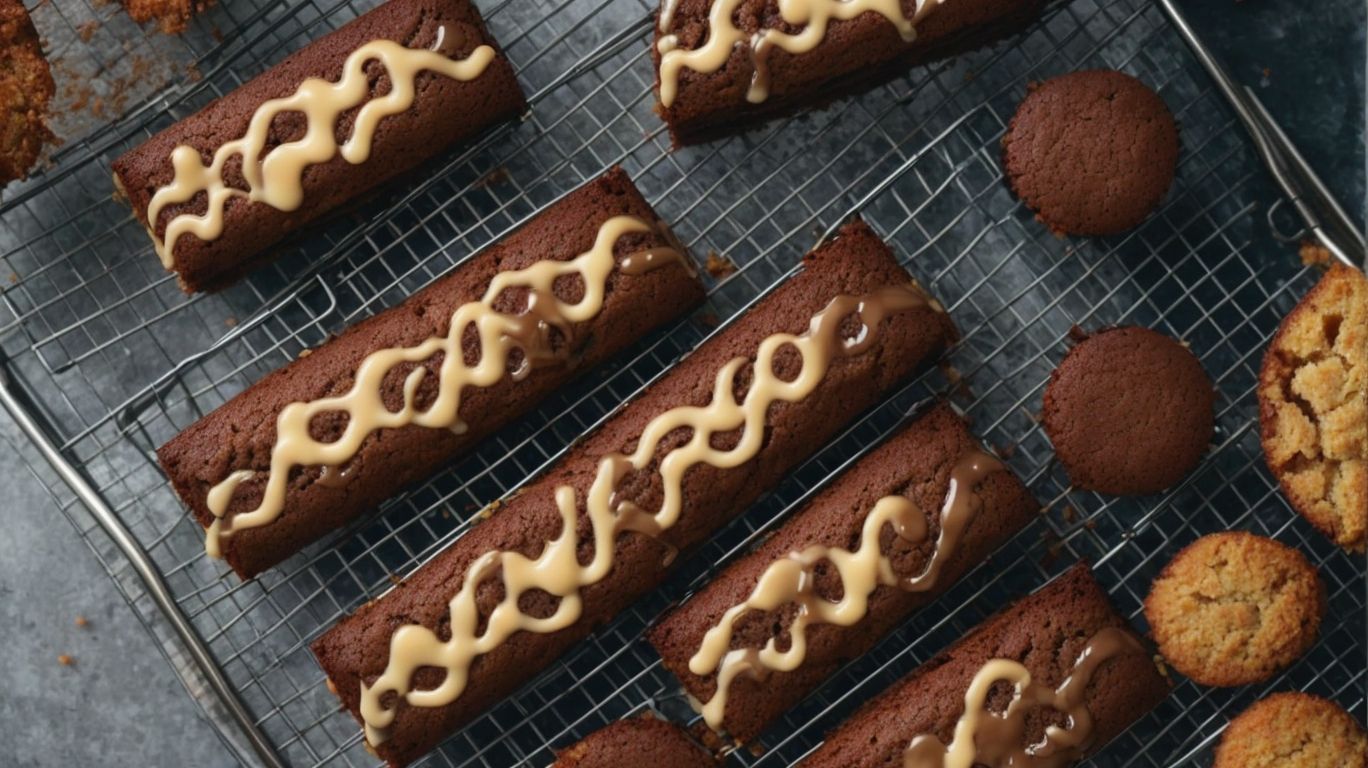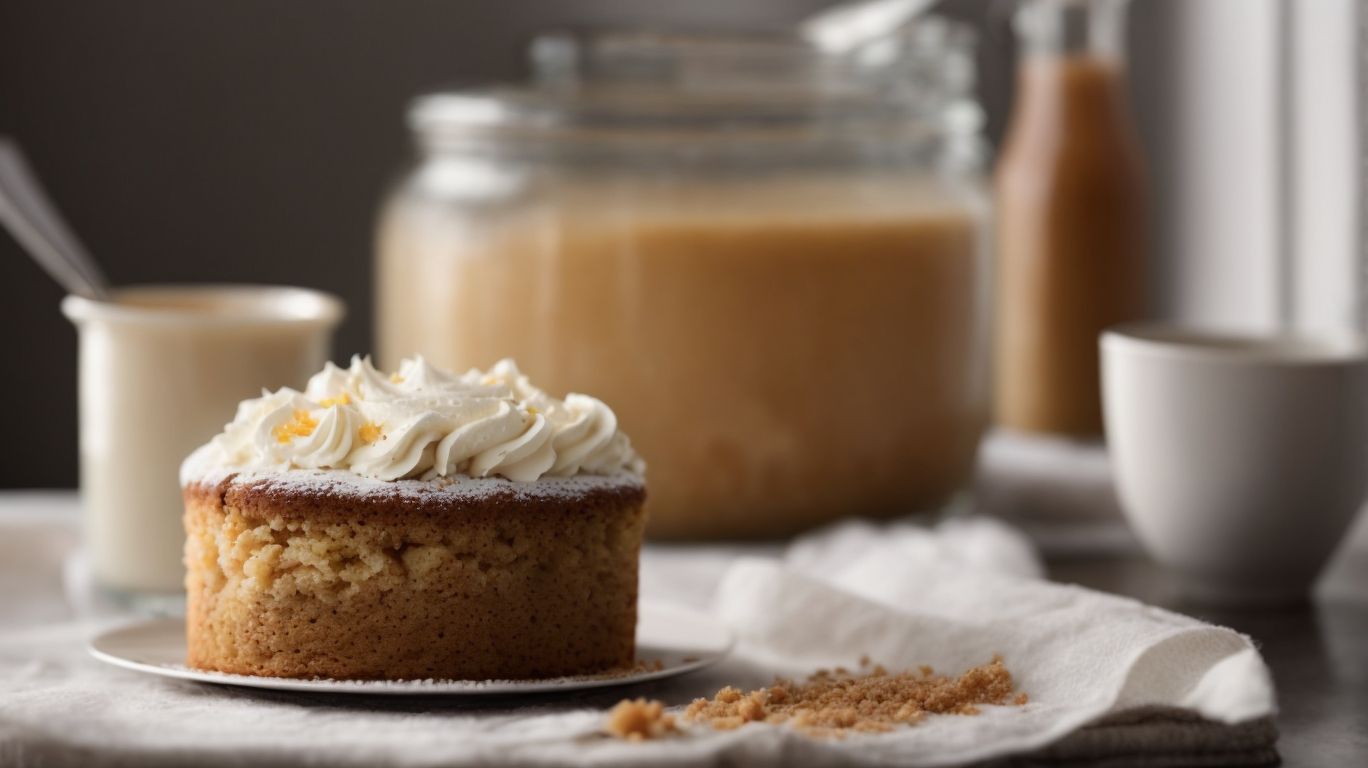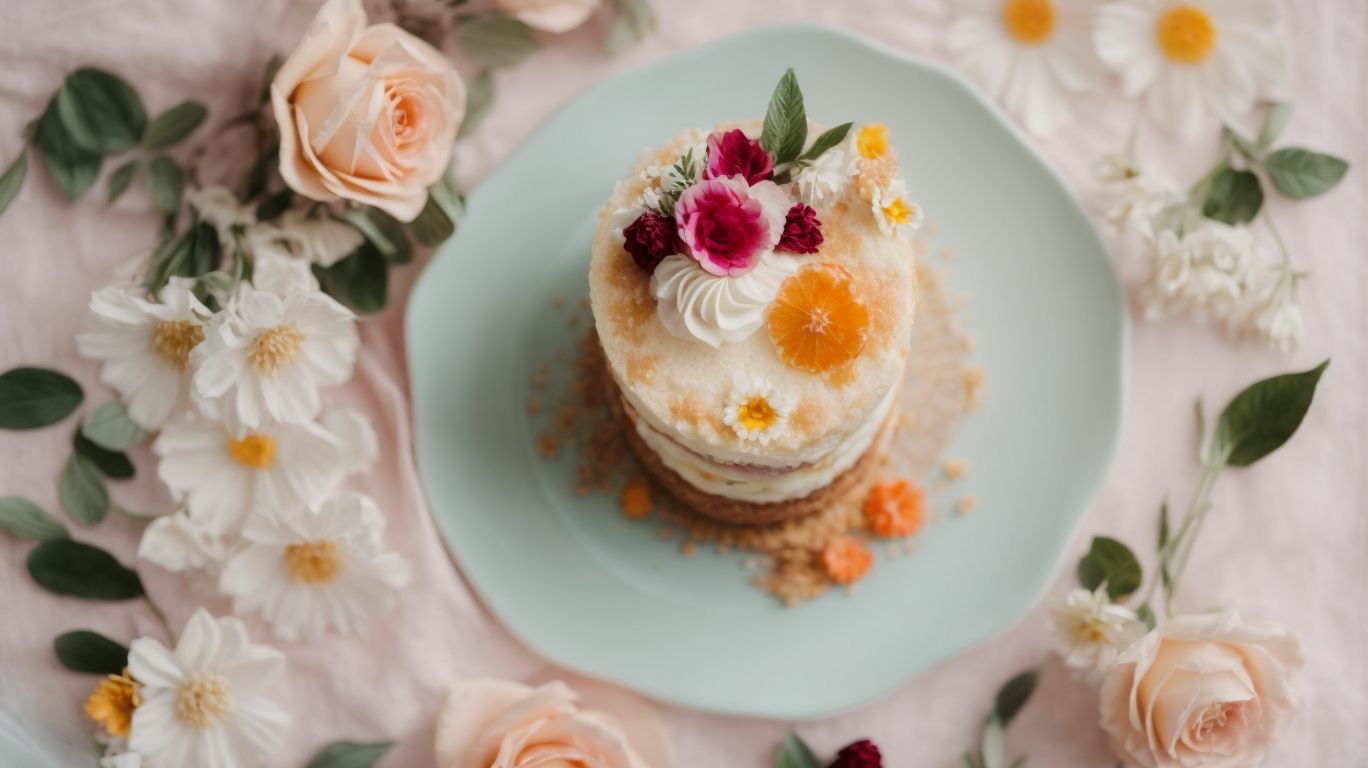How to Bake a Cake Without Baking Powder?
Are you out of baking powder but still craving a delicious cake? Don’t worry, there are alternatives to help you bake a perfect cake without this essential ingredient.
We will explore what baking powder is, how it works in baking, and why you might want to bake a cake without it. In addition, we will discuss different substitutes for baking powder and provide tips on how to successfully bake a cake without it.
Let’s get started and satisfy your sweet tooth without missing a beat!
Key Takeaways:
What is Baking Powder?
Baking powder is a leavening agent commonly used in baking to help baked goods rise and achieve a light and fluffy texture.
Composed of an acid, a base, and a filler, baking powder plays a crucial role in recipes. When mixed with liquid, the acid and base react to produce carbon dioxide gas bubbles, which expand during baking, causing the dough or batter to rise. This chemical reaction is the key to achieving the desired texture in cakes, muffins, and pancakes.
There are two main types of baking powder: double-acting and single-acting. Double-acting baking powders release gas in two stages, once when mixed with wet ingredients and again when exposed to heat, providing a more consistent rise. Single-acting baking powders react and release gas immediately upon contact with a liquid, making them suitable for recipes that require quick leavening action.
How Does Baking Powder Work in Baking?
Baking powder works by releasing carbon dioxide gas when it comes into contact with moisture and heat during the baking process.
This chemical reaction is crucial in leavening the batter, creating a light and airy texture in baked goods. When baking powder interacts with ingredients like eggs, sugar, and flour in recipes, it helps the mixture rise evenly, resulting in a fluffy and well-rounded final product. Proper measurement of baking powder is essential to ensure the right amount of gas is released, allowing the baked goods to achieve the perfect texture.
Why Would You Want to Bake a Cake Without Baking Powder?
There are several reasons why you might choose to bake a cake without using baking powder in your recipe.
One common motivation for skipping baking powder in cake recipes is to accommodate dietary restrictions. For example, those following a low-sodium diet may opt to avoid baking powder to reduce the overall sodium content in their desserts. Omitting baking powder can lead to a more dense and fudgy texture in certain types of cakes, such as flourless chocolate cakes or brownies. Some bakers also prefer to experiment with alternative leavening agents like yogurt, buttermilk, or whipped egg whites to achieve a unique flavor profile and moist crumb in their cakes.
You Ran Out of Baking Powder
One common reason for baking a cake without baking powder is running out of this essential ingredient when preparing your recipe.
When faced with this situation, there are several emergency baking substitutions that can help you maintain the quality and texture of your cake. One popular alternative to baking powder is using baking soda combined with an acidic ingredient such as lemon juice or yogurt. The acidity of these ingredients reacts with the baking soda to create the leavening effect needed in your cake.
If you don’t have baking soda on hand, you can also try using whipped egg whites as a substitute. Beating egg whites until stiff peaks form and then gently folding them into your cake batter can help provide the necessary lift and structure.
You Want a Healthier Option
Opting for a healthier alternative can be a reason to bake a cake without using baking powder, such as replacing it with baking soda or other natural ingredients.
By incorporating natural leavening agents like baking soda or buttermilk in your baking, not only do you avoid the potential chemical additives in commercial baking powder, but you also enhance the health benefits of your sweet treats. These alternatives not only aid in leavening the cake but also contribute to a lighter texture and a subtle tangy flavor. Baking with these natural ingredients can result in a cake that is lower in sodium, making it a favorable option for those keeping an eye on their salt intake.
You Want to Experiment with Different Ingredients
Experimenting with different ingredients and flavors can inspire baking a cake without relying on baking powder, introducing new taste profiles and textures to your creations.
One intriguing ingredient that can substitute baking powder is a ripe banana. Not only does it add natural sweetness, but it also lends a moist texture to the cake.
You can also experiment with yogurt or buttermilk for a tangy kick in your baked goods. Incorporating carbonated drinks like soda water or cola can help achieve a light and airy consistency without the need for baking powder.
What Can You Use Instead of Baking Powder?

Credits: Poormet.Com – Bobby Garcia
When baking a cake without baking powder, there are several substitutes you can use to achieve similar leavening effects.
In the absence of baking powder, incorporating alternative leavening agents can be a game-changer in your baking endeavors. One popular option is a combination of baking soda and cream of tartar, which mimics the leavening power of baking powder. For those who prefer a simpler solution, self-rising flour is another go-to substitute that already contains leavening agents. Additionally, natural acidic ingredients like lemon juice or yogurt can react with baking soda to create the desired rise in your cakes.
Understanding the right ratios and usage of these substitutes is crucial. For instance, when using baking soda and cream of tartar, the typical ratio is 2:1 respectively. It’s important to adjust these proportions depending on the type of cake you’re making – whether it’s a delicate sponge cake or a rich chocolate cake.
Baking Soda and Cream of Tartar
Combining baking soda with cream of tartar can mimic the leavening action of baking powder when preparing cakes without this ingredient.
When baking soda and cream of tartar are combined, they react chemically to produce carbon dioxide, creating bubbles in the batter. This reaction is essential for providing the light and airy texture in baked goods.
One popular recipe where this combination works effectively is in making snickerdoodle cookies. The acidity of the cream of tartar activates the baking soda, leading to the perfect rise and texture in these classic treats.
To adjust the quantities of baking soda and cream of tartar in a recipe, it is recommended to use a ratio of 2:1 (2 parts cream of tartar to 1 part baking soda). This ratio ensures proper leavening without leaving any residual flavors.
Self-Rising Flour
Self-rising flour contains baking powder as one of its ingredients, making it a convenient substitute for traditional flour in cake recipes.
When using self-rising flour, the leavening agents are already evenly distributed throughout the flour mixture, providing consistent rising action during baking. This eliminates the need to measure and mix separate leavening agents, which can save time and reduce the risk of uneven rising. The balance of ingredients in self-rising flour ensures that cakes have a light and tender texture, ideal for various baked goods such as biscuits, pancakes, and muffins. Its all-in-one composition makes it a popular choice among home bakers looking for convenience without compromising on quality.
Buttermilk
Using buttermilk in place of baking powder can introduce a tangy flavor and tender crumb to your cake batters.
Buttermilk not only imparts a delightful tanginess but also acts as a natural leavening agent due to its acidity, helping the cake rise while keeping it moist and tender. When combined with baking soda, buttermilk creates carbon dioxide bubbles that expand during baking, resulting in a light and fluffy texture.
To adjust your recipes, substitute 1 cup of buttermilk for every 1 teaspoon of baking powder. Decrease the acidic ingredients like lemon juice or vinegar if your recipe already includes buttermilk to maintain the right balance.
How to Bake a Cake Without Baking Powder?

Credits: Poormet.Com – Zachary Ramirez
Baking a cake without using baking powder requires adjusting the recipe and employing alternative leavening methods to achieve the desired texture and rise.
To successfully bake a cake without relying on baking powder, the first step is understanding the role of this essential ingredient in traditional cake recipes. Baking powder serves as a leavening agent, responsible for creating air bubbles that allow the cake to rise during baking. When removing baking powder from the equation, you can turn to alternative leavening agents such as baking soda, buttermilk, yogurt, or even whipped egg whites to achieve a similar effect.
Next, when adjusting the original recipe, it’s crucial to consider the acidic/alkaline balance that interacts with these alternative leavening agents. For example, if substituting baking soda for baking powder, which is often combined with an acidic ingredient like buttermilk or vinegar, ensure to maintain this acidic element to activate the leavening process.
Adjusting the Recipe
When baking a cake without baking powder, adjusting the recipe to compensate for the lack of leavening agent is crucial for achieving the desired cake texture.
One key consideration in modifying the ingredient ratios to ensure a well-risen cake without baking powder is the role of eggs. Eggs act as a binding agent and leavening agent in baking, contributing to the structure and rise of the cake. Increasing the number of eggs can help compensate for the absence of baking powder, providing additional lift and lightness to the cake.
Adjusting the amount of sugar in the recipe is essential. Sugar not only adds sweetness but also affects the texture and moisture retention of the cake. Too much sugar can make the cake overly dense, while too little can result in a dry and crumbly texture.
Using Buttermilk as a Leavening Agent
Employing buttermilk as a leavening agent in cake batter can enrich the flavor profile and contribute to a moist and tender crumb in the final baked product.
Buttermilk’s acidity reacts with baking soda to create carbon dioxide gas, which helps the cake rise, resulting in a light and fluffy texture. This reaction also neutralizes the tangy flavor of buttermilk, leaving behind a subtle, creamy taste in the cake.
Buttermilk can be added to various types of cakes, such as red velvet, chocolate, or banana, enhancing their richness and depth of flavor. Adjusting the amount of buttermilk in the recipe alters the cake’s consistency, with more buttermilk leading to a moister crumb.
Using Self-Rising Flour
Utilizing self-rising flour in cake batter formulations eliminates the need for additional leavening agents like baking powder, streamlining the baking process.
Self-rising flour functions as a self-contained leavening agent due to the presence of baking powder and salt, which are evenly distributed throughout the flour.
This unique composition ensures that the cake rises evenly and consistently, resulting in a light and fluffy texture.
The convenience of using self-rising flour also lies in the fact that it simplifies ingredient measurements, making baking more accessible to home cooks of all skill levels.
When adapting traditional recipes to incorporate self-rising flour, it’s essential to adjust the salt and baking powder amounts to maintain the proper balance of flavors and textures.
Using Baking Soda and Cream of Tartar
Combining baking soda and cream of tartar in precise proportions can effectively substitute for baking powder in cake recipes, ensuring proper leavening and texture.
When using baking soda and cream of tartar as a leavening alternative, it’s crucial to maintain the correct ratios for successful results. Baking soda requires an acidic ingredient like cream of tartar to activate its leavening properties. Too much baking soda can result in a soapy taste, while too much cream of tartar can lead to a metallic flavor.
Experimenting with these leavening agents allows for versatility in cake baking. For fluffy, delicate cakes, a higher ratio of baking soda to cream of tartar is recommended. On the other hand, denser cakes may require a different ratio to achieve the desired texture.
Tips for Baking a Cake Without Baking Powder

Credits: Poormet.Com – Albert Baker
When preparing a cake without baking powder, following specific tips and techniques can help ensure a successful baking outcome with optimal texture and flavor.
One crucial aspect to consider is the choice of ingredients. Opt for freshest eggs and high-quality butter to enhance the richness and structure of the cake. Flour selection plays a significant role in texture; opt for cake flour for a lighter crumb. Using buttermilk or yogurt can contribute moisture and tanginess.
For proper mixing, utilize the creaming method for butter and sugar to incorporate air, resulting in a light and fluffy cake. When dealing with egg whites, ensure they are at room temperature for better volume, and fold them delicately into the batter to prevent deflation.
Adjusting baking temperature is vital for cakes without baking powder. Start with a higher temperature to set the structure, then lower it for even baking. This technique promotes rising without the need for a chemical leavening agent.
Use Fresh Ingredients
Selecting fresh and high-quality ingredients is essential when baking cakes without baking powder to ensure the best possible flavor and texture outcomes.
When you opt for ingredients that are fresh and of premium quality, such as organic eggs, high-fat butter, and local milk, you are setting the foundation for a delicious homemade cake.
Ensure your flour is unbleached and within its expiration date to guarantee optimal rise and texture in the absence of baking powder.
Conduct regular checks on your ingredients, storing them in cool, dry places, away from direct sunlight to prevent spoilage or flavor loss.
Don’t Overmix the Batter
Avoid overmixing the cake batter when baking without baking powder to prevent gluten development and achieve a light and tender cake crumb.
One crucial step in achieving the perfect cake texture without baking powder is the proper mixing technique. Mixing the batter just until the ingredients are combined is key to ensuring a light and airy crumb. Overmixing can lead to excessive gluten formation, resulting in a dense and tough cake.
Eggs play a vital role in providing structure and moisture to the batter. Beating them separately before incorporating them into the mixture can help achieve a smooth consistency without overworking the batter.
When folding in the dry ingredients, be gentle and avoid vigorous stirring to maintain the desired airy texture. Carefully following these steps will help you bake a delicious cake without the need for baking powder.”
Make Sure Your Oven is at the Right Temperature
Maintaining the correct oven temperature is critical when baking cakes without baking powder to ensure even baking and proper rise.
Temperature accuracy plays a vital role in achieving the desired texture for your cake. If the oven temperature is too high, the cake may cook too quickly on the outside, leaving the center undercooked. On the other hand, if the temperature is too low, the cake may not rise properly, resulting in a dense texture.
Preheating the oven to the right temperature is the first step to ensure consistent baking results. Use an oven thermometer to verify the accuracy of your oven settings, as built-in thermometers can sometimes be inaccurate. Monitor temperature fluctuations during baking by avoiding frequently opening the oven door, which can lead to temperature drops.
When baking a cake without baking powder, being attentive to the oven temperature can help you adjust the baking time accordingly. If you notice that the cake is browning too quickly on the outside while the center is still uncooked, you can tent it with aluminum foil to prevent further browning while allowing the center to finish baking. By monitoring the oven temperature and making small adjustments as needed, you can achieve perfectly baked cakes every time.
Conclusion

Credits: Poormet.Com – Donald Torres
Baking a cake without using baking powder opens up a world of creative possibilities in the kitchen, allowing for unique flavor combinations and texture variations in your baked creations.
Experimenting with alternative leavening agents like buttermilk, yogurt, or vinegar can replace the need for baking powder, giving your cakes a distinct tangy or moist texture.
Incorporating diverse ingredients such as fruits, nuts, spices, or flavored extracts enriches the taste profile of your cakes, making each bite a delightful experience.
Fine-tuning your baking techniques, such as whipping eggs, creaming butter and sugar, or folding in dry ingredients gently, play crucial roles in achieving the ideal cake texture and crumb structure.
Frequently Asked Questions
How to Bake a Cake Without Baking Powder?
Baking powder is a leavening agent that helps cakes rise and become fluffy. However, it is possible to bake a delicious cake without using baking powder. Here’s how:
What can I use instead of baking powder in a cake?
You can use baking soda, buttermilk, yogurt, whipped egg whites, or self-rising flour as substitutes for baking powder.
How much baking powder do I need for a cake?
The general rule of thumb is to use 1 tsp of baking powder for every 1 cup of flour. However, if you’re using a substitute, the amount may vary. It’s best to follow a recipe specifically designed for baking without baking powder.
Can I just omit baking powder from a cake recipe?
It’s not recommended to omit baking powder completely, as it plays an important role in the texture and rise of the cake. If you don’t have baking powder on hand, try using one of the substitutes mentioned above.
Will my cake still rise without baking powder?
Yes, your cake will still rise without baking powder, but it may not be as fluffy and light as a cake made with baking powder. The texture and density of the cake will also be affected.
Can I use baking powder and baking soda together in a cake?
Yes, you can use baking powder and baking soda together in a cake recipe, but make sure to adjust the amounts accordingly. Too much leavening can cause the cake to collapse or have a bitter taste. It’s best to stick to one type of leavening agent for a successful bake.

